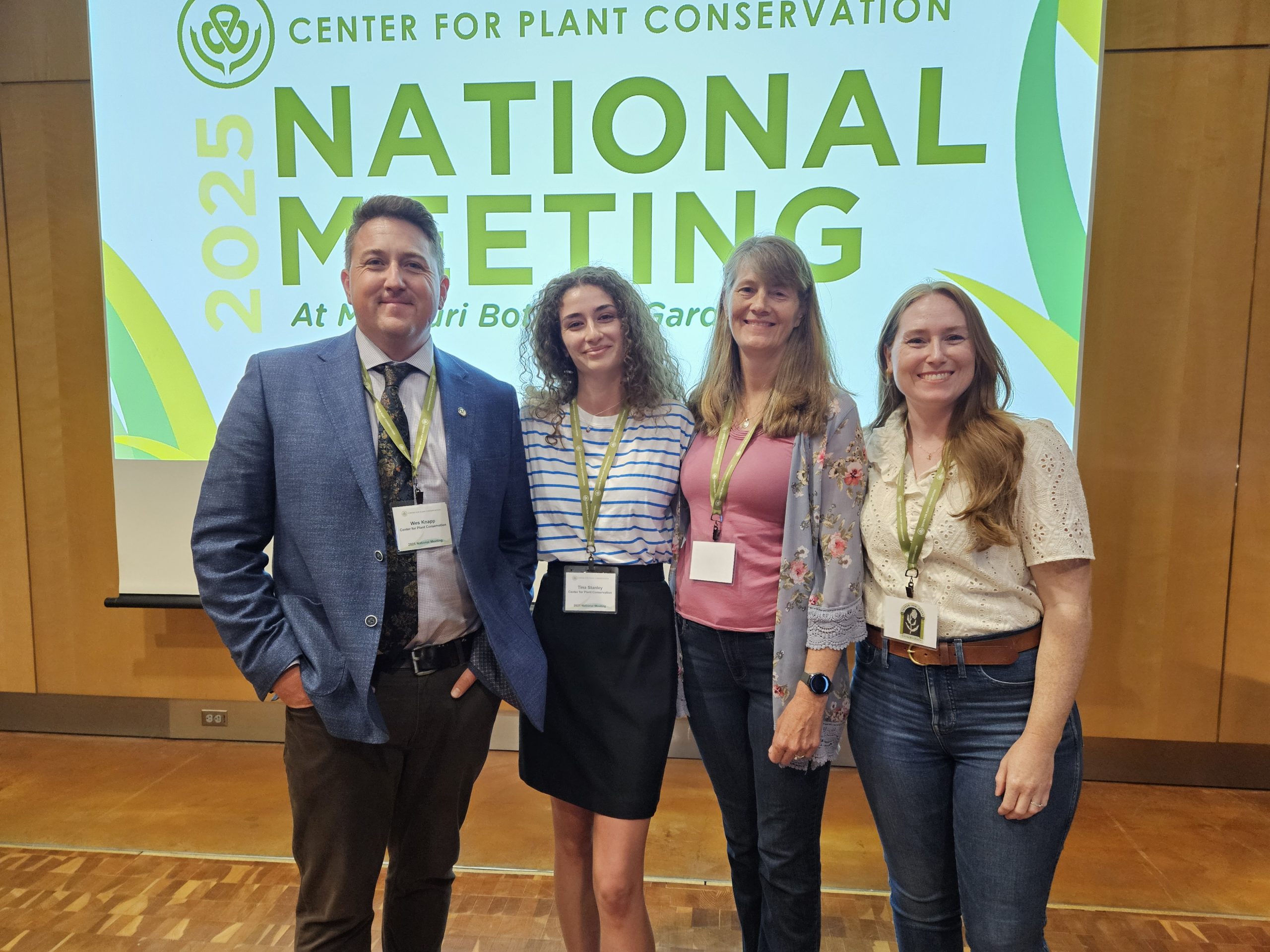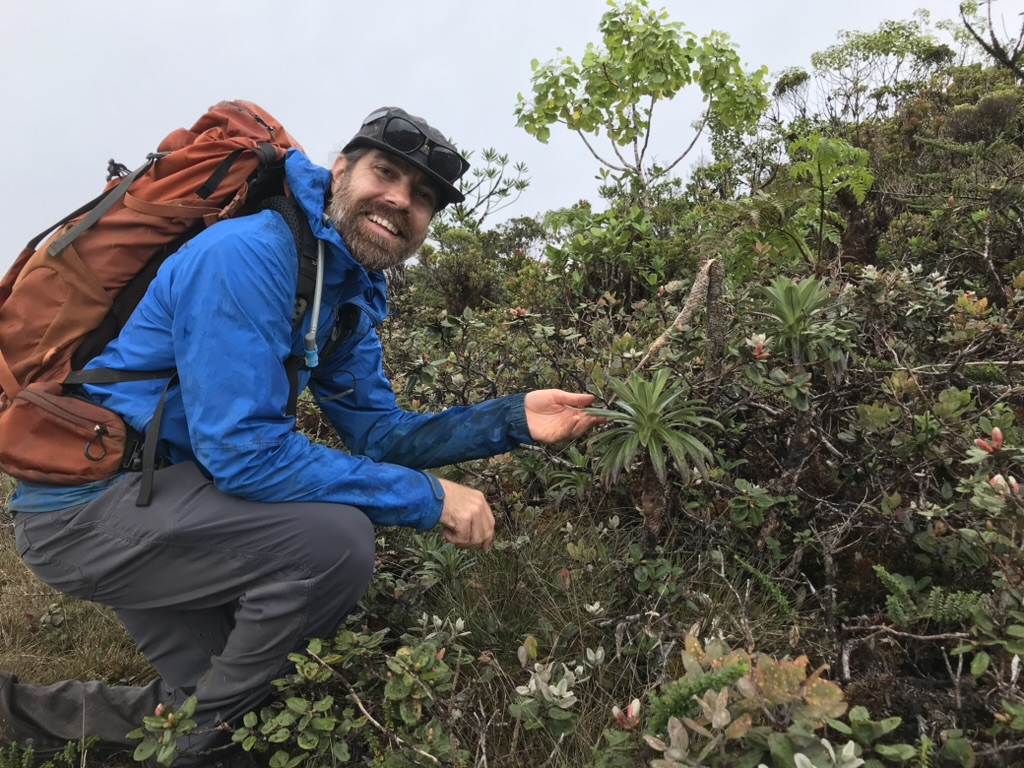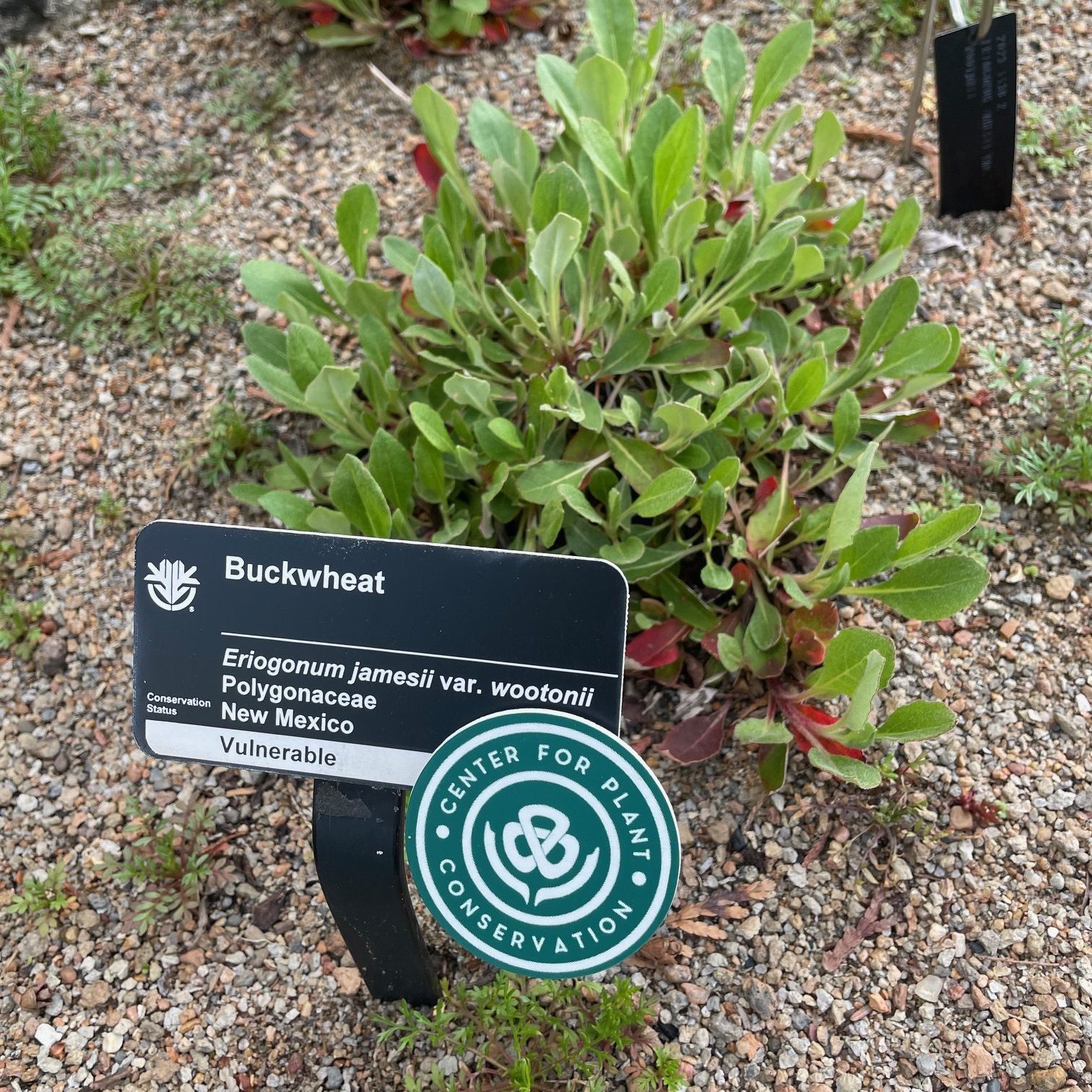Save Plants
CENTER FOR PLANT CONSERVATION
August 2021 Newsletter
The importance of trees for human well-being cannot be overemphasized and many of us have fond memories of sharing special moments in the presence of trees. Early in my career, I had the pleasure of working at The Arboretum at Flagstaff and still smile remembering my 4-year-old daughter scampering through the forest and telling her doctor that she played at the “bee-tum.”
In this month’s newsletter, we celebrate some of the arboretums in the CPC network. We learn about Polly Hill Arboretum’s patience and perseverance needed to germinate Stewartia seeds and care for them to reproductive maturity. We learn about Holden Forests & Gardens National Natural Landmark, and The Dawes Arboretum’s natural reforestation techniques intended to maximize diversity while promoting public understanding of the importance of natural forests. Our Conservation Champion Sean Hoban exemplifies how a love of forests can lead to working within the CPC network and promoting tree diversity in botanical gardens and arboretums.
In gratitude for all trees give to us, we wish you and your families good health and time with trees!
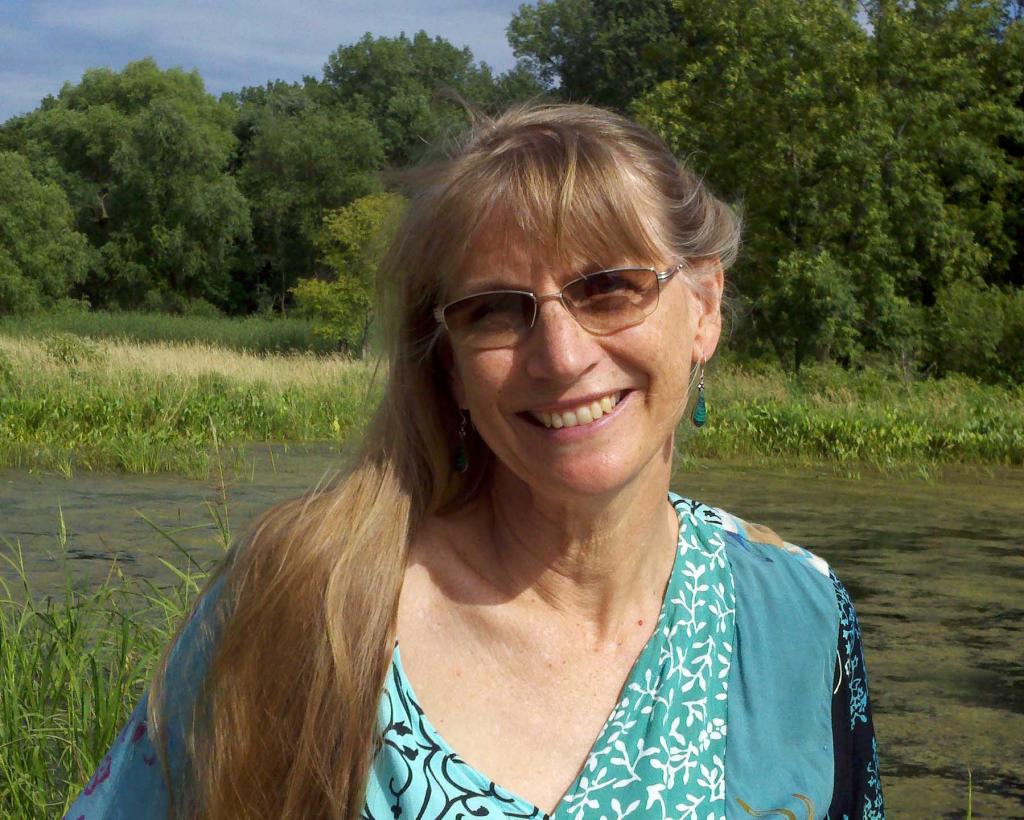
Joyce Maschinski
CPC President & CEOPatiently Growing a Stellar Stewartia Collection
In 1962, Polly Hill embarked on a journey launched by a set of silky stewartia (Stewartia malacodendron) seeds collected from trees in historical Williamsburg and gifted to her by a botanist friend. Because they require cold and warm stratification, the seeds take nearly two years to germinate after planting in the ground. But the legendary horticulturalist was averse to installing mature plants in what would become the Polly Hill Arboretum (PHA): “You miss the plants in their teenage (juvenile) years – these are, after all, the most interesting years!” And Polly was a patient woman – she waited 27 years for an unusual form of silky stewartia to bloom and reveal its purple stamens to her.
Silky stewartia was not the only species of stewartia established at PHA: the conditions on Martha’s Vineyard are almost ideal for growing them and the Asiatic species have found comfortable homes next to the two North American species (silky stewartia and mountain stewartia – S. ovata). As those early stewartias grew, so did PHA’s work with this special genus. PHA currently maintains 70 trees representing 22 taxa in the genus, is working on developing the two North American species for horticulture, and serves as the international cultivar registrar for the group. In 2006, the collection was recognized as a Nationally Accredited Collection by what is now the Plant Collections Network. Accreditation as a national collection recognizes PHA’s commitment to understand and save these plants.
Around this time, PHA’s mission began to focus more on conservation. New infrastructure, including a greenhouse added in 2007, allowed the arboretum to grow as a horticultural conservation entity. In 2015, curatorial intern Victoria Stewart developed a web-based pictorial key as a comprehensive resource on the genus, using a monograph of the stewartia produced in the 1970s by PHA Director Emeritus Stephen Spongberg. In recognition of this contribution and PHA’s history of research, collection, and horticultural success with the genus, the International Society for Horticultural Science appointed PHA the international cultivar registration authority for stewartia. This designation has helped PHA connect to plant breeders, commercial growers, and other arboreta as they intensified efforts to grow their own stewartia collection and develop propagation protocols.
Collection trips in search of stewartias throughout Asia continue. At home, PHA is dedicated to the two North American species, establishing genetically representative collections and advancing horticultural practice. Silky stewartia and mountain stewartia are both recognized as Globally Secure (G4) species. However, populations are declining in several southern states, with local designations ranging from Vulnerable (S3) to Critically Imperiled (S1). Silky stewartia’s natural propensity to grow in rich floodplain terraces – historically attractive to settlers and farmers – makes it particularly susceptible to habitat loss. The mountain stewartia has also been a victim of habitat loss and other threats. PHA is addressing this challenge by working with collaborators to make accessions of both species throughout their natural range. The team – informally known as the Stewartia Working Group – consists of Mt. Cuba Center (a new CPC Participating Institution), Smithgall Woodland Garden of the Atlanta Botanical Garden, and other southern gardens.

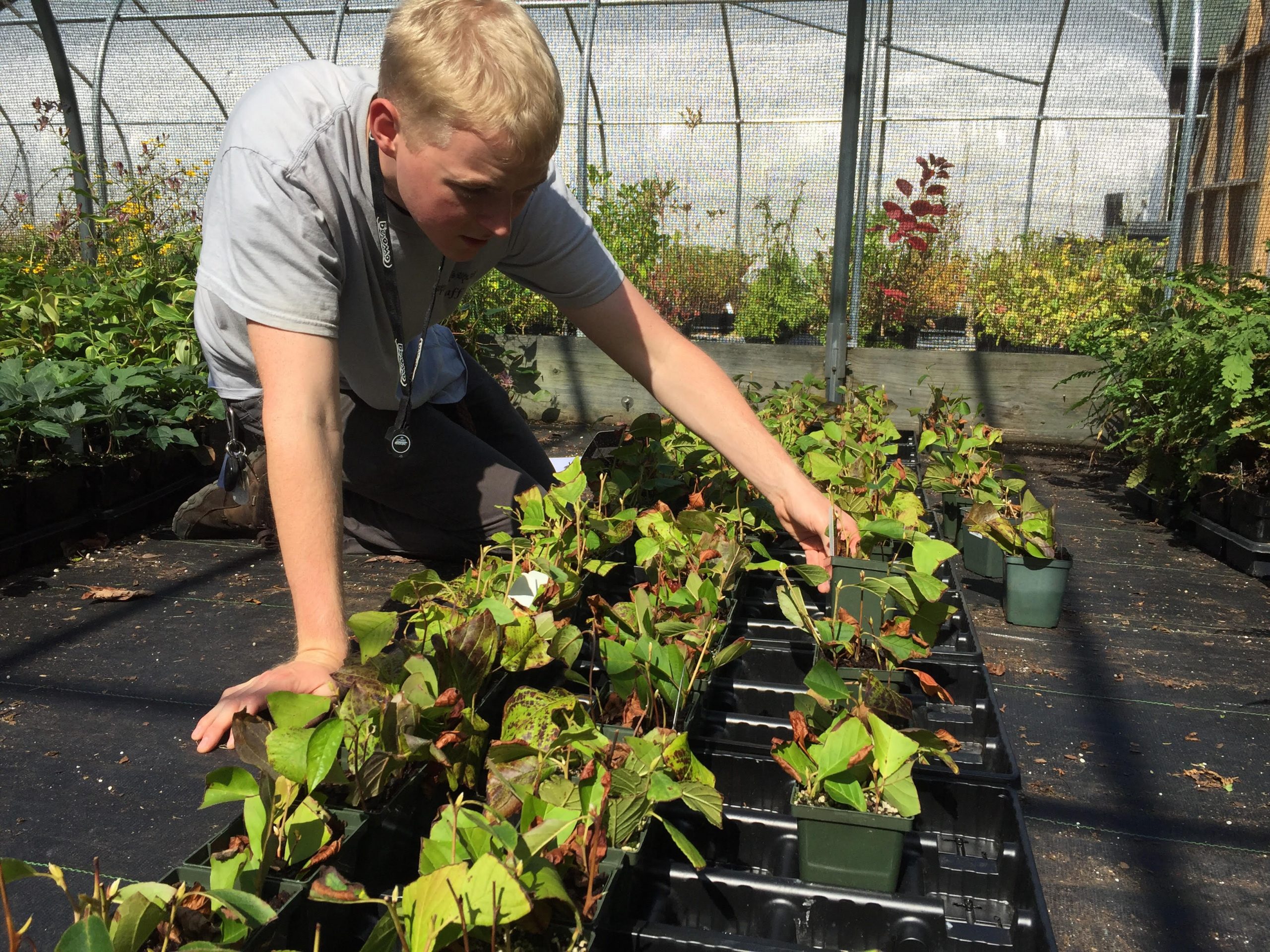
Once seeds or cuttings are obtained, the next challenge is to actually grow the plants. While Polly found some success with seeds, the 20-month germination process can lead to low germination rates, longer exposures to fungi, and other complications. Cuttings come with a different challenge – getting the juvenile trees through winter. The solution on both fronts may be found through PHA’s upgrades to lab-quality refrigeration equipment. More precise and stable temperatures, along with information gleaned from a literature review, have resulted in an increased percentage of cuttings breaking dormancy after overwintering (around 65% on average) and recent successes in seed germination.
PHA is making great strides toward establishing propagation protocols for both silky and mountain stewartia. Why is this so important for conservation? Quite simply, a population in the wild can’t be restored from a single plant. Propagation protocols support ex situ collection development for at-risk species, enabling arboreta to maintain diverse collections and produce plants for in situ restoration.
-
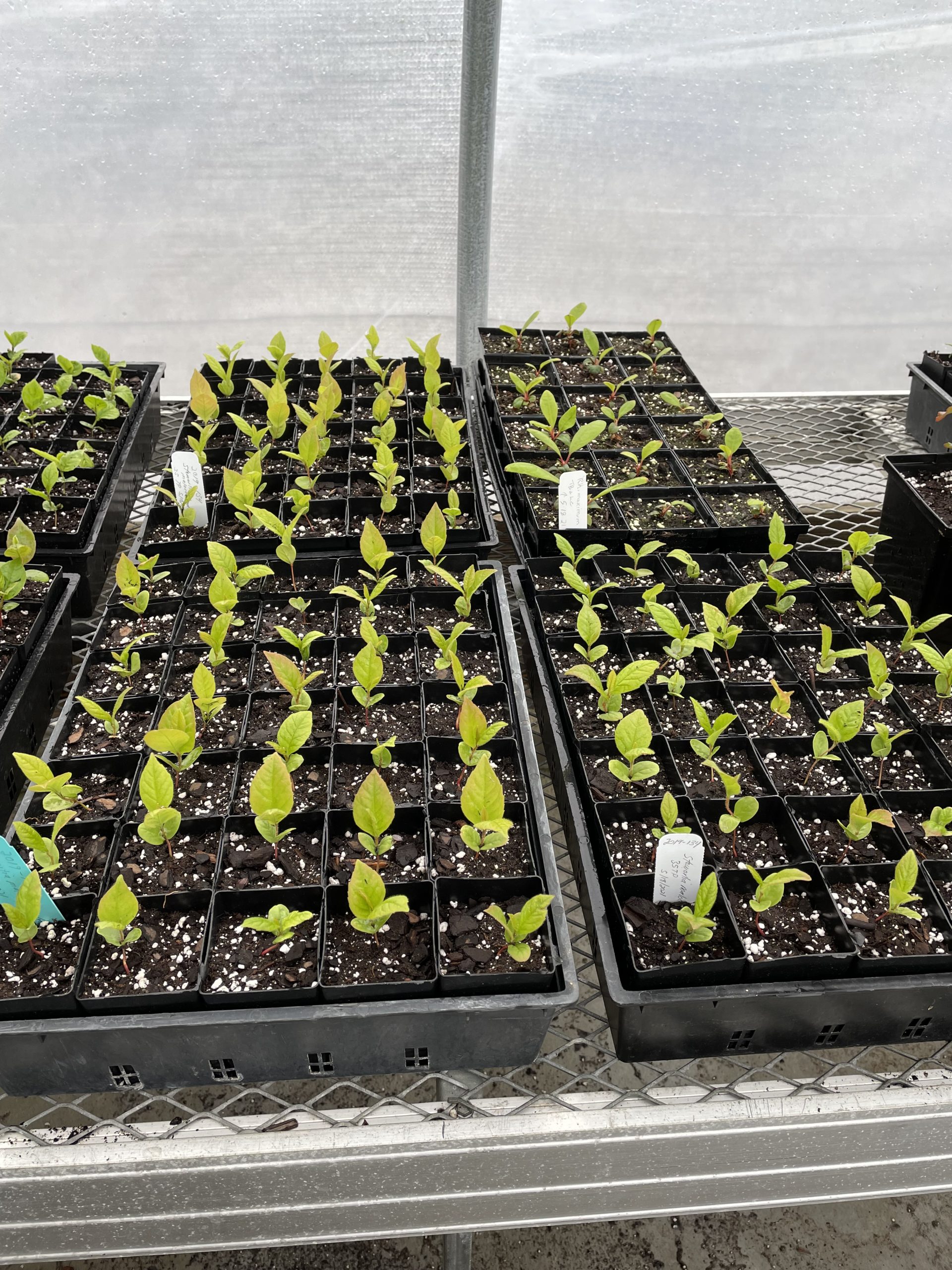
Wild collected silky stewartia (Stewartia malacodendron) from Georgia is growing well in PHA's facilities. PHA holds 94% of the known wild collected accessions of the species. Photo courtesy of Polly Hill Arboretum. -
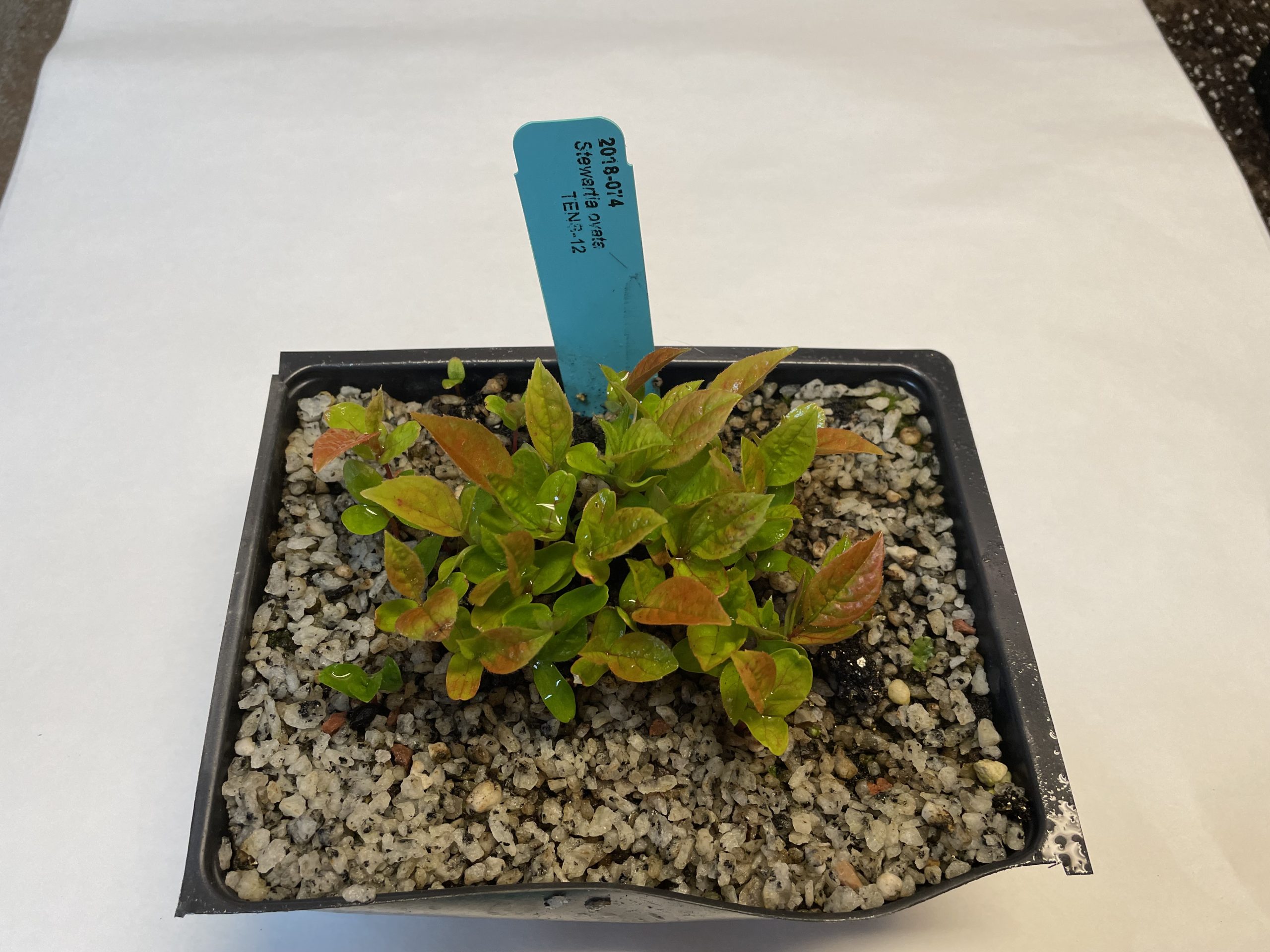
Polly Hill Arboretum has worked to collect mountain stewartia (Stewartia ovata) from throughout its range, including seed from a Tennessee population resulting in the seedling here. Photo courtesy of Polly Hill Arboretum. -
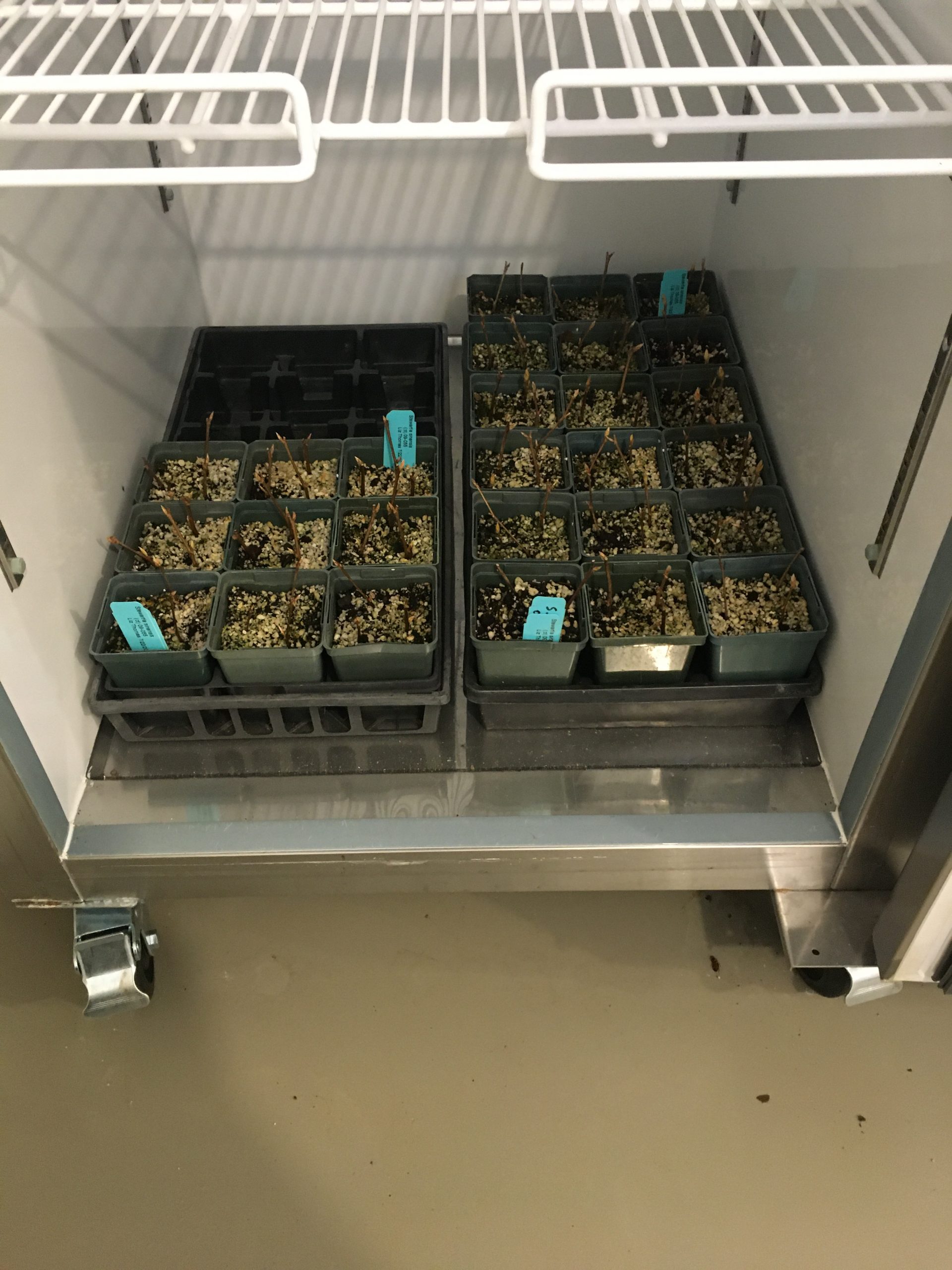
Research-grade refrigeration for dormancy treatments of stewartia clones has led to more successful overwintering, and more successful propagation and collection care. Photo courtesy of Polly Hill Arboretum.
PHA currently has an impressive 11 wild-collected accessions of silky stewartia and 10 of mountain stewartia – representing 98% and 63%, respectively, of their accessions. While continuing to build its own stewartia collection, the arboretum also plans to help establish insurance populations at different institutions, in collaboration with the Stewartia Working Group. Every additional site at which stewartias can be conserved and viewed offers an opportunity to introduce more people to these stunningly beautiful trees. Perhaps one day Polly’s cultivars of these unique but vulnerable North American native species will find their home in more public gardens, to be grown and appreciated more widely.
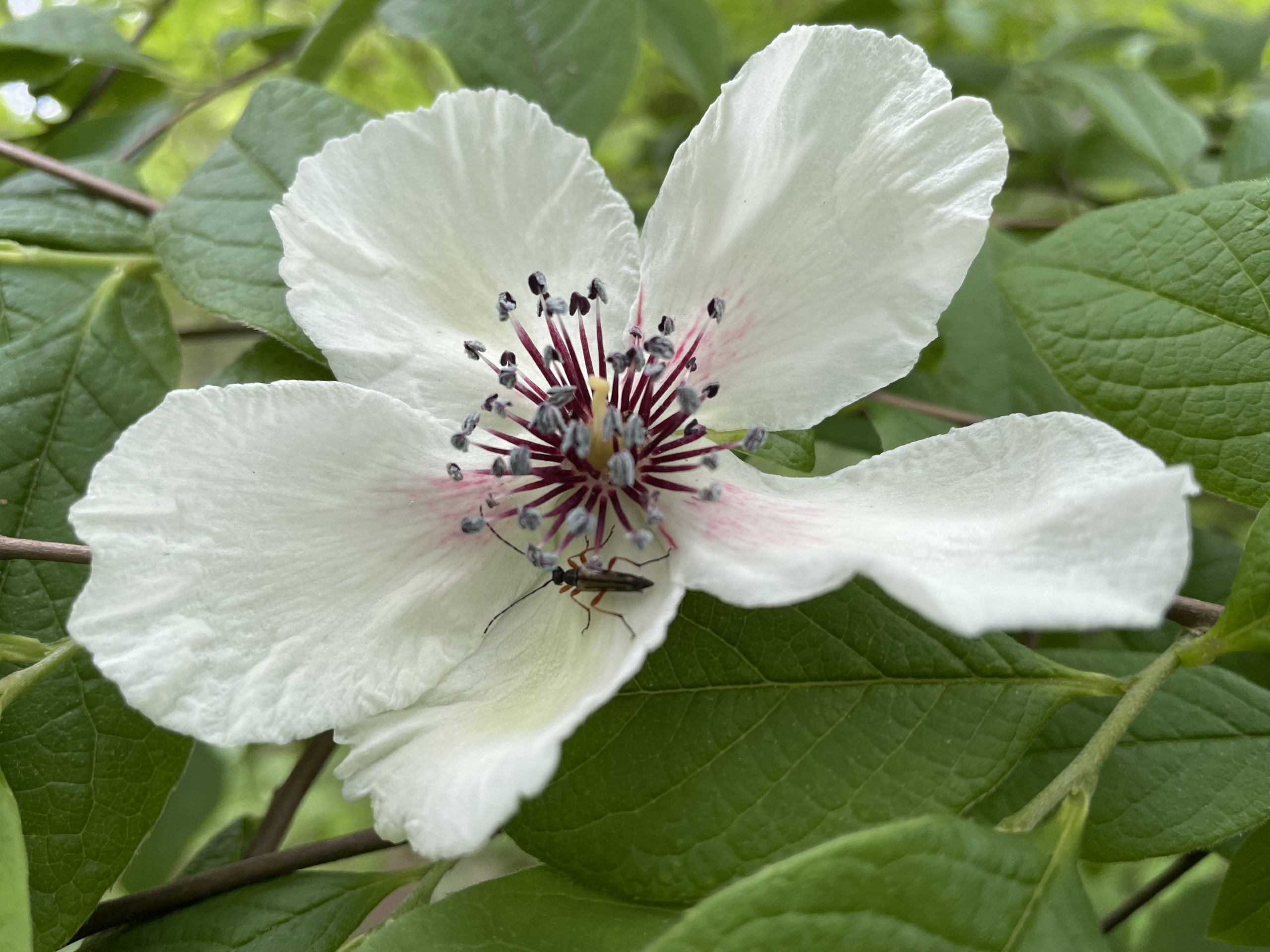
Biodiversity Conservation and Climate Change: Tackling Dual Threats in Forest Management.
The Holden Arboretum, established in 1931, is one of the largest arboreta in the United States. It is located 20 miles east of Cleveland, Ohio, joining the Cleveland Botanical Garden as part of Holden Forests & Gardens. The arboretum encompasses over 3,000 acres of natural areas – more than 2,600 of them forested. Conservation of forest plant and animal species is at the forefront of our science mission.
In 1967, the United States Department of the Interior designated several of the Holden Arboretum’s forests as National Natural Landmarks. Two examples are Stebbins Gulch and Bole Woods, which cover over 800 acres of contiguous forest. Tree ring analysis has identified old growth remnants in large portions of the forest in Stebbins Gulch, including chestnut oaks over 400 years old and beech trees over 250 years old. During European settlement, forests in Ohio were cut down for industrial uses and lands were converted to agriculture – a common occurrence across much of the eastern United States. Most of Holden’s forests reflect this legacy of past agricultural land use, presenting both a challenge and an opportunity for conservation.
The majority of our woodland is about 100 years old, having developed following agricultural abandonment in the 1930’s and 1940’s. These woodlands are generally species-poor and lack structural characteristics and other features seen in our mature, old growth stands. Consequently, they may not be resilient to the long-term effects of a changing climate. Since invasive plants and overabundant herbivores can suppress plant diversity, our traditional management of these young woodlands has focused on controlling invasive plants – such as garlic mustard (Alliaria petiolata) and buckthorn (Rhamnus cathartica) – and overabundant populations of white-tailed deer (Odocoileus virginianus). Yet more than two decades of such management was unable to restore to the younger woodlands the diversity and features of the adjoining old growth forests. This called for a change in management approach.
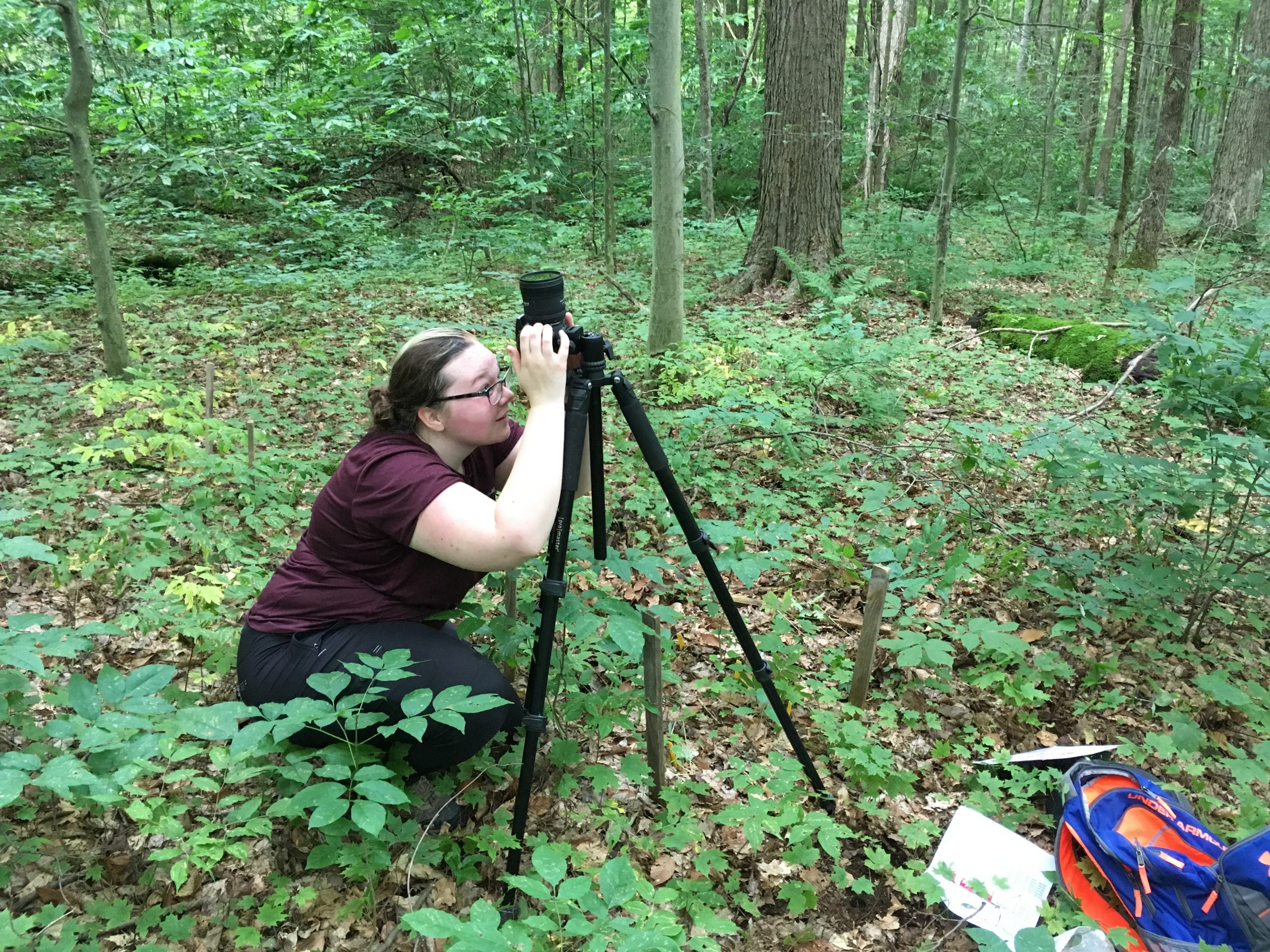
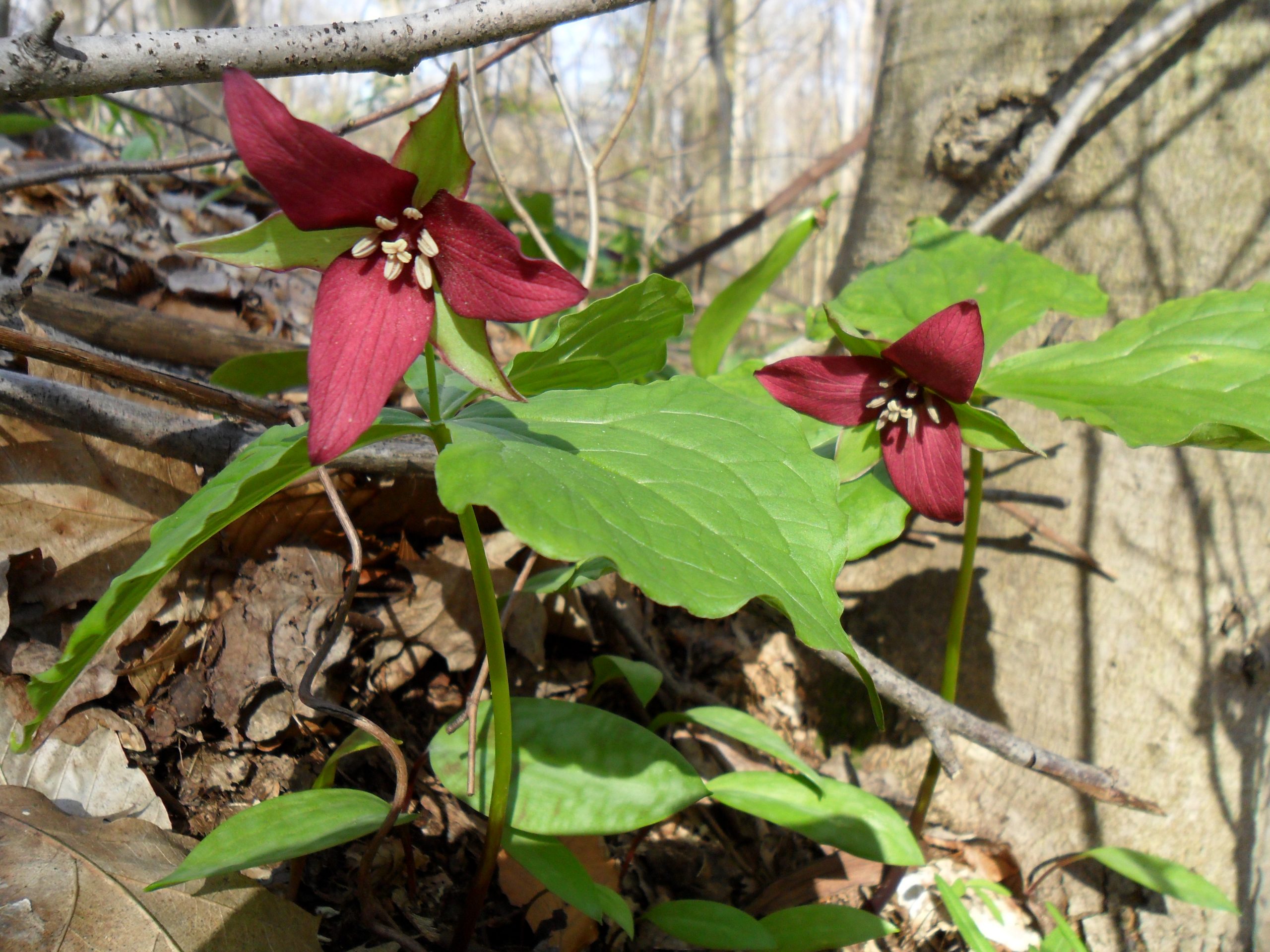
In 2014, arboretum researchers began intensive surveys across all 2,600 acres of our forested landscape. We used a quick survey method developed in-house, called the RUFA (Rapid Upland Forest Assessment) method (Burke et al., 2016). It allows for assessment of forest ecological integrity – the degree to which a forest has the diversity and structural characteristic of a mature forest stand – in less than 30 minutes. The RUFA methods enable us to rapidly identify structural and composition differences between young and old forest stands, then determine what intervention may be needed to restore missing features. Rather than focusing on specific types of plant communities, our goal is to maximize diversity of native tree, shrub, and herbaceous forest plants, while increasing important structural characteristics, such as snags, light gaps, and coarse woody debris. We also work to maximize the diversity of animal and insect populations supported by these key forest structural components. One of the best insurance policies against climate change is increased biodiversity, since diverse systems are more stable in the face of environmental change.
In 2018, we undertook two major restoration projects at Holden to create the conditions for more biodiverse, resilient forests. First, we applied standard forestry management techniques to increase diversity and support important forest structural components on approximately 84 hectares (207 acres) of young secondary growth forest. Our methods included improvement cuts, timber stand improvement (invasive species management and grape vine control), or a combination of both. Holden researchers are actively monitoring the site to determine long-term effects on forest biodiversity and function.
In addition, we have made 27 hectares (67 acres) of this managed forest accessible to the public as the Working Woods Learning Forest. With 85% of forested lands in Ohio privately owned, preservation and promotion of healthy and biodiverse forests requires engagement with private landowners. Courses and programs offered at Working Woods – many in collaboration with the Ohio Division of Natural Resources – engage both private landowners and industry professionals to encourage proper forest management and promote climate resilient forestry practices. To paraphrase Aldo Leopold, the future of conservation lies in the private landowner considering the public interest. Holden’s Working Woods program is our effort to create more biodiverse, climate resilient forests – not only on our own lands, but throughout northern Ohio.

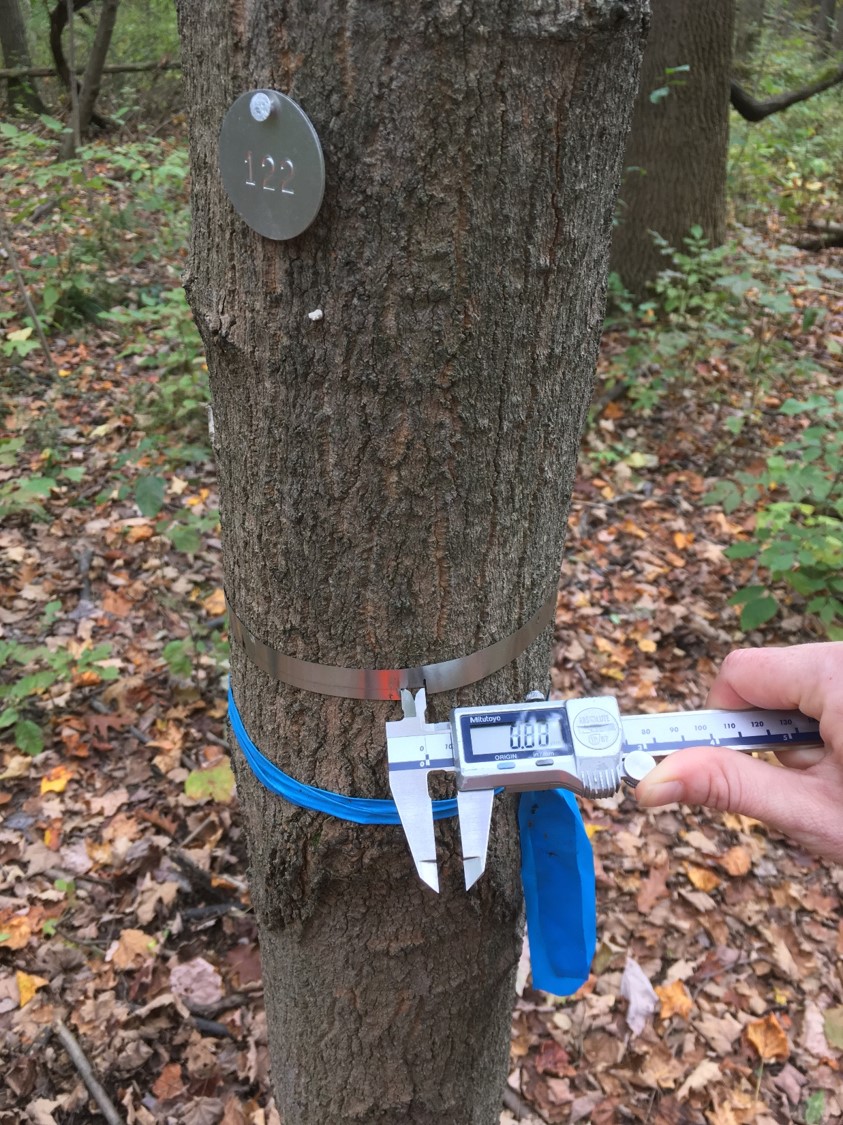
References:
Burke DJ, Knisely C, Watson ML, Carrino-Kyker SR, and Mauk RL (2016) The effects of agricultural history on forest ecological integrity as determined by a rapid forest assessment method. Forest Ecology and Management 378: 1–13
Natural Resource Management and Conservation Research at The Dawes Arboretum and Beyond
The Dawes Arboretum has been rooted in conservation and wise management of natural resources since its founding in 1929, with a vision ranging from growing collections of trees and plants suitable for Ohio’s climate to experimenting with forestry techniques and sharing outcomes with the public. Today that vision continues with a renewed strategy on managing ecosystems for resilience and biodiversity.
The Arboretum uses a whole-ecosystem approach to manage its nearly 2,000 acres, including woodlands, wetlands, prairie and meadows, as well as sandstone gorges, riparian corridors and farmland. The primary goal is conservation of plant species – both rare species that are currently threatened due to loss of original habitat, and abundant species that face future threats from a changing and more extreme climate. Methods in its toolbox include promoting native plant communities and the wildlife that depend on them, monitoring biodiversity within ecosystems, and applying innovative management techniques to find solutions for complex ecological problems. The Arboretum’s approach to forest restoration provides a good example. Former agricultural land is first used to study a model of natural reforestation. The model is then applied to develop plans for planting a forest that will support the greatest number of species as climate changes.
Developing a natural reforestation design model requires a series of steps, beginning with a thorough site evaluation. Data collected from soil mapping, corridor connectivity analysis, and examination of historical land use provide a foundation for determining an ecological restoration target for each annual planting project. Species are then selected to increase biodiversity and promote resilience to our changing climate, using a two-part prioritization based on locally adapted seed – collected from known wild origin – and research-based predictions of hardiness to anticipated climate variations. For each whole-site planting, an appropriate seed mix is defined to establish a seed bank of herbaceous plants that will tolerate a variety of light conditions as the trees mature and form a canopy. This strategy is key to inhibiting non-native colonization and setting a healthy trajectory for establishment of locally appropriate species. Both trees and shrubs are included to support a forest structure that will progress from mid-story layers to a mature canopy over time. The Arboretum team also uses management case study data to vary model parameters such as layout, tree protection from herbivory, and vegetation maintenance, homing in on the most efficient and cost-effective methods to reduce fossil fuel inputs during the first decade of establishment.
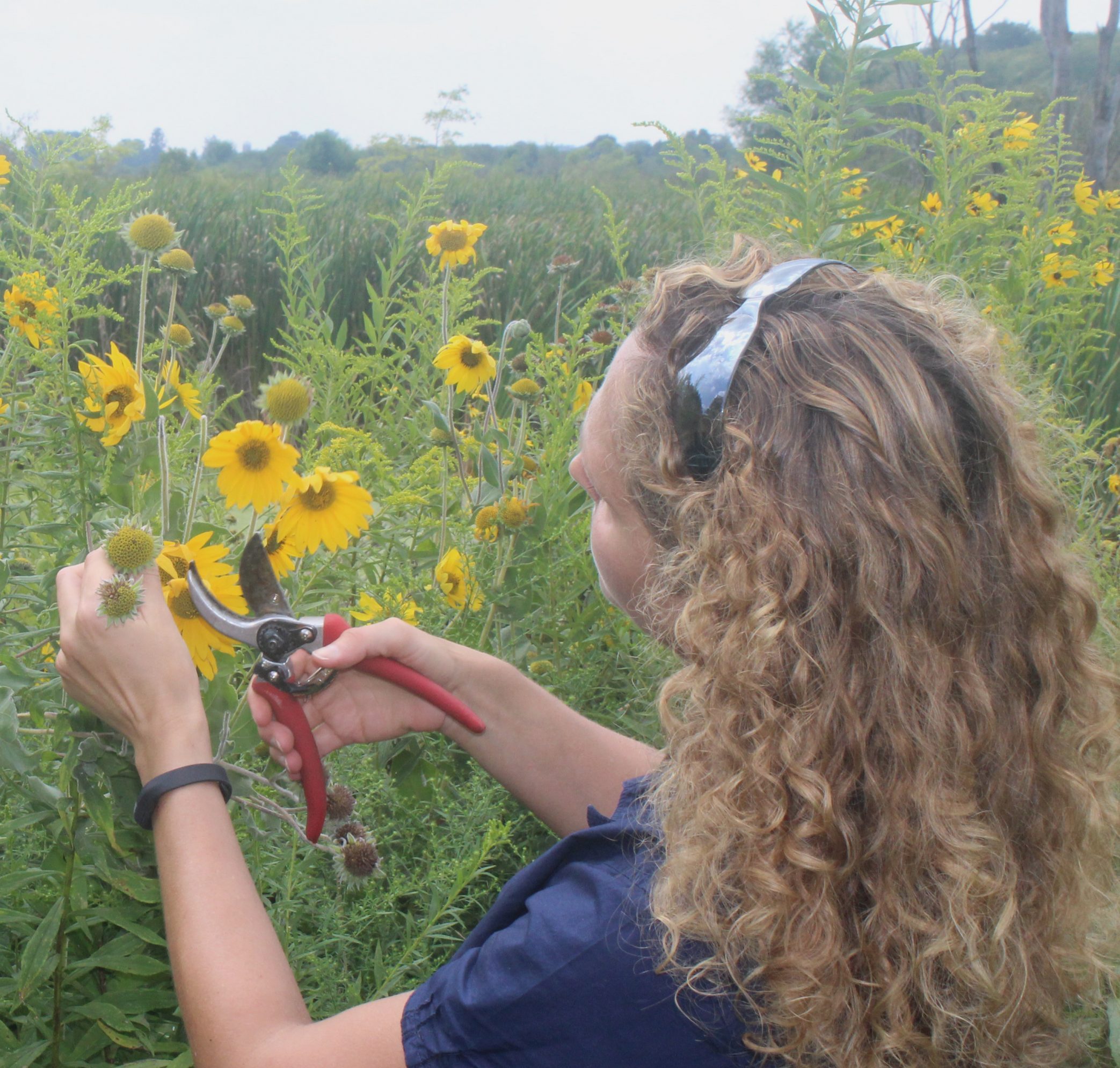
The Arboretum’s natural resource management program has met with many successes to date. Importantly, the ecosystem approach has served rare species well. On the nearly 2,000-acre reserve land, the conservation team maintains stable populations of the three-birds orchid (Triphora trianthophora), listed as rare or threatened throughout much of its range in North America. Preservation and forest site management have been key to ensuring viability of this population, despite changes to the light regime following increasingly frequent storm events that damage the canopy.
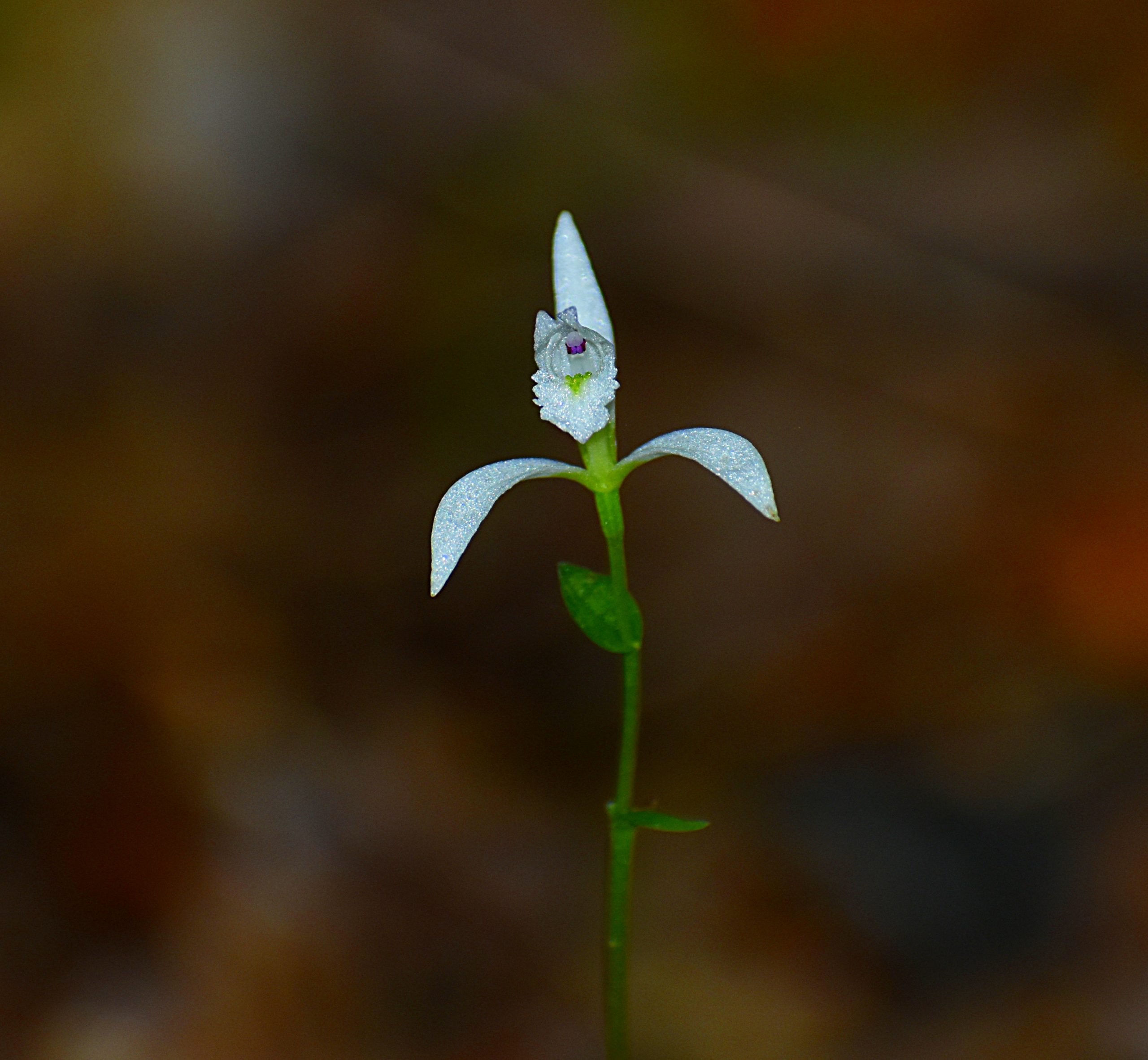
The Arboretum’s goals are ambitious, and its work includes several challenges – especially in the areas of building capacity, funding and infrastructure. One particularly difficult task is to accurately anticipate extreme weather events – increased precipitation, more frequent flooding, and drought caused by extreme heat waves – and devise ways to mitigate them using current resources. Like many organizations, the program could benefit from additional funding and infrastructure. Yet optimism runs high. According to Director of Land Conservation Shana Byrd, “We believe that with enough innovation, creativity, and drive to succeed, our strategy of demonstrating the results of our efforts, sharing outcomes through peer-to-peer training, actively building the next generation of horticulture and conservation professionals through our advance training programs, and seeking support from our community and partners to help us reach the next rung on our ladder will help us address these challenges.”
Shana’s statement recognizes that the Arboretum’s work is not done in a vacuum. Partners contribute valuable insight, support and capacity. The Ohio State University, Denison University, and other academic institutions help the Arboretum advance its research objectives through collaborative studies of living collections and natural areas. Key partners in capacity-building include the regional Rural Action Inc., and the federal Corporation for National and Community Service.
In addition to hands-on conservation work, the Arboretum places equal emphasis on involving the community and inspiring them to protect native species in their own backyards. A significant achievement is the establishment of an active and dedicated group of volunteers, AmeriCorps national service members, and Environmental Professionals Training Program trainees – all essential to achieving the conservation and natural resource goals of the organization. Another major contribution is the Arboretum’s Greenbelt Initiative, which provides a community consultation resource to local businesses to support the installation of conservation-focused landscapes throughout the region. The Ohio Native Plant Month organization recently designated the Arboretum as a Native Plant Learning Center in recognition of its many contributions to educating the public about the values of native plants, including convening an Ohio Native Plant Network, stimulating diverse stakeholders to promote the use of native plants in a landscape context, and a multitude of educational workshops and symposiums that demonstrate the value of our nation’s native flora.
Looking to the future, the Arboretum team will build on their successes to advance the applied science of ecological restoration, focusing on wide-ranging value for the conservation of native plants. Strategies include educating the public on the critical need to conserve plants for individual well-being, demonstrating the value in innovative conservation and restoration approaches, training the next generation of conservation and horticulture professionals, and empowering communities by teaching practical ways to create native landscapes that support biodiversity at home. The Arboretum looks forward to building capacity for its growing focus on botanic research, to enable conservationists to plan more resilient natural areas and working landscapes with capacity to endure the changes anticipated in years to come.
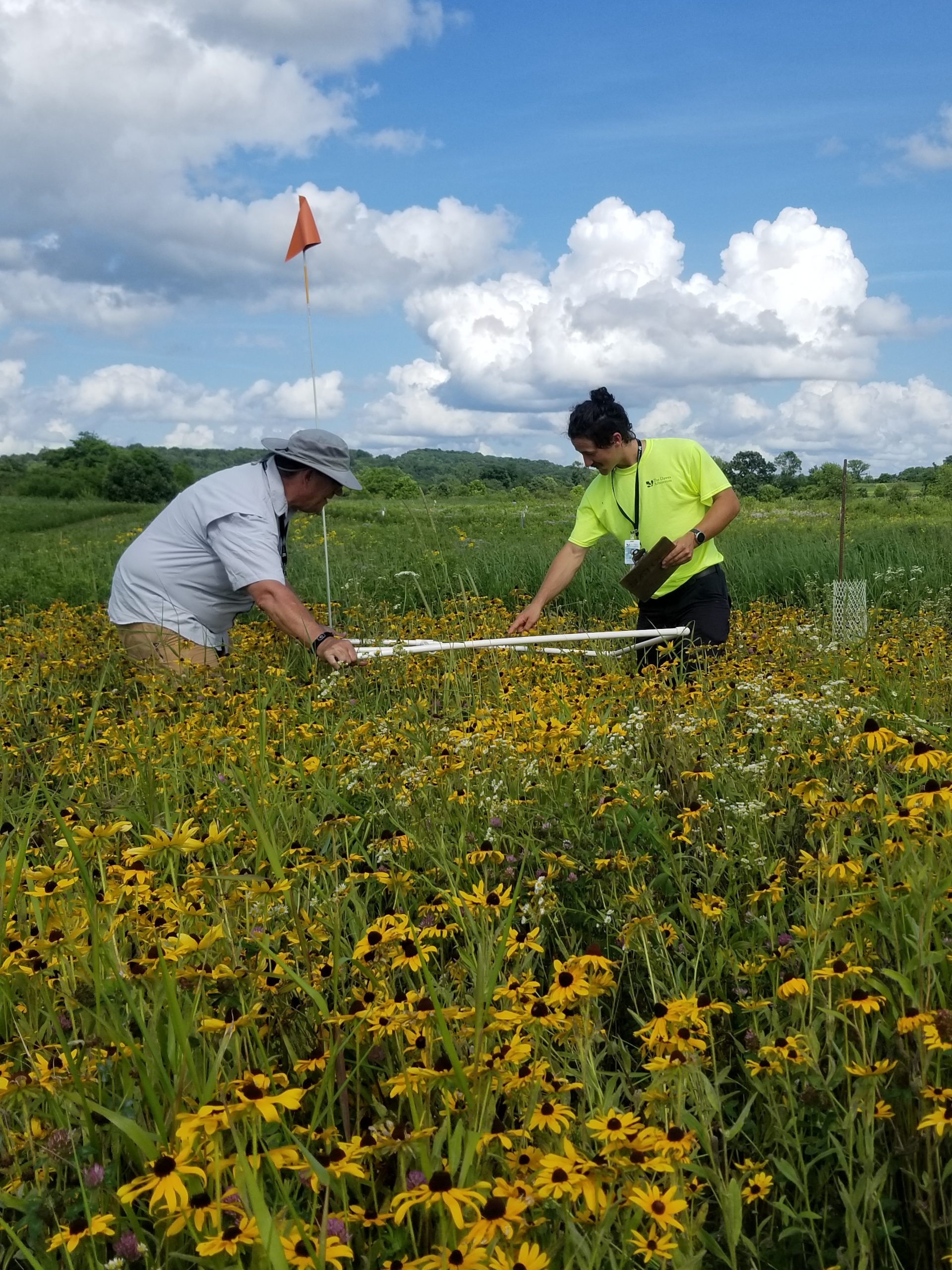
Dr. Sean Hoban
Our August Conservation Champion, Dr. Sean Hoban, is the consummate tree conservation biologist. His work to help understand and improve the conservation value of tree collections held in gardens and arboreta, as well as the ways botanic gardens may collaborate to secure tree diversity, is exemplary. His work has led to hands-on advice for seed collectors and for improving global policy. We appreciate his valuable contributions to the science of plant conservation and the CPC network!
When did you first fall in love with plants?
I have always loved forests, and my career in tree conservation could have been predicted from a young age. Two experiences were probably the most formative. First were numerous weekend backpacking trips in Kentucky, Virginia, and Indiana throughout middle school and high school. Seeing the forest change as we hiked up mountains; seeing the same forest in different seasons and types of weather; seeing forests with different types of human impact; and understanding the web of life, change, and ecology – all had a great impact. Second was becoming aware of high levels of deforestation of the Amazon rainforest around my eighth-grade year – the images, news stories, and statistics during one of the peaks of tropical deforestation gave me a desire to contribute to conservation.
What was your career path to Tree Conservation Biologist?
After these formative experiences with forests, combined with my curiosity and inquisitiveness, I knew I wanted to be a biologist of some type. I pictured myself at the Forest Service or some other organization with a strong mission and a long-timeframe vision. I also really enjoyed university and was on the track to become a professor. But during graduate school at the University of Notre Dame and afterwards – when I spent two years in Europe working on conservation policy, then working at the University of Tennessee – I learned about botanic gardens and seed banks, and I knew that this could be a great place for me. In fact, it was CPC members Naomi Fraga (California Botanic Garden) and Michael Way (Kew Millennium Seed Bank Project) who really helped immerse me in the botanic garden world! I will always be indebted to their kind invitations to visit their institutions, discuss my work, and learn about plant conservation challenges to work on, which helped me bridge the gap between my academic background and applied work.
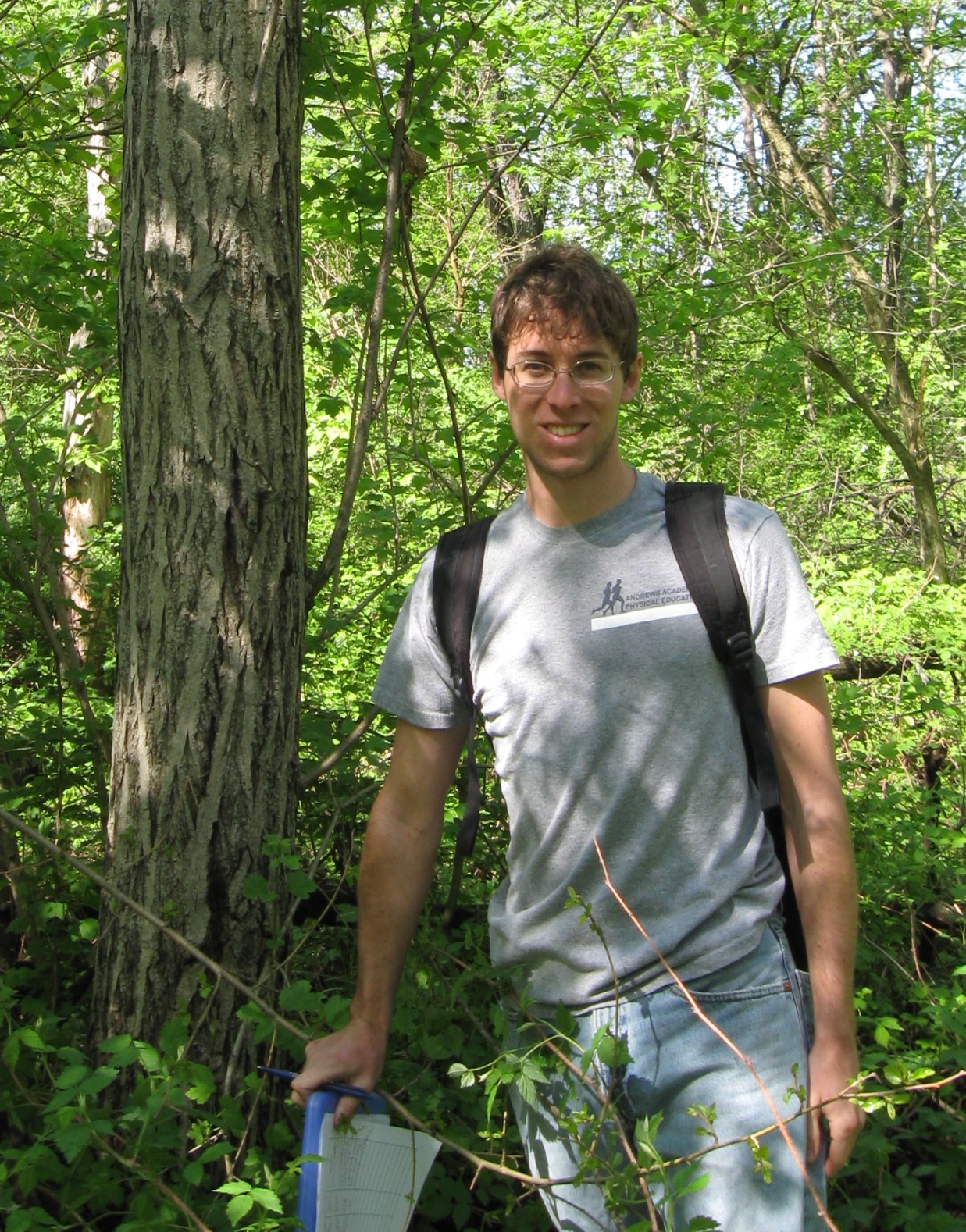
What advice do you have for newcomers to the field of plant conservation?
This is a hard one, because there’s not just one career type or contribution that can be made to plant conservation. All skills and backgrounds are needed, from taxonomy and botany to data science, communication, and horticulture. One important thing is to have some interdisciplinary training – to have a specialty, but also wide knowledge across multiple fields. It’s also valuable to cultivate networks of people you meet – because plant conservation sure is a team effort!
Please share about one of your current projects at The Morton Arboretum.
A team of colleagues at The Morton Arboretum are trying to quantify and understand the conservation value of our tree collections by collecting metrics beyond the number of species. For several decades, botanic gardens have been seeking ways to increase conservation value – the usefulness of our collections to conservation, horticulture, tree breeding, scientific understanding, and more. We apply a data-driven approach that uses phylogenetic, genetic, and environmental tools, along with cultivar checklists and assessments of threatened species, to quantify our progress towards these different elements of ‘value.’ To begin with, we are focusing on four genera that have different strengths and histories (Malus, Ulmus, Quercus and Tilia). We hope that our work will assist decision-making for accessioning and deaccessioning, as well as our ability to measure changes to The Morton Arboretum collections over time. This work is generously supported by the Institute for Museum and Library Services grant MA-30-18-0273-1.8.
What are some of the challenges you face in your work?
The challenges that come to mind are common to most of us working in nonprofits or in conservation or scientific areas: funding; balancing a host of tasks, from administration to recruiting to balancing budgets; and finding time for reading about advances in the field. But I am blessed to be in a really great line of work with great colleagues, and I have lots of help tackling these challenges. Another big challenge for me is one that most conservationists face – determining when I have done enough and taking time away from work to recharge, when there is so much that needs to be done! A final challenge has been learning how to engage with international conservation policy, such as the post-2020 global biodiversity framework at the upcoming Convention on Biological Diversity. Crafting policy wording that is short and clear, and reaching a middle ground between complexity and simplicity, has been a process of trial and error over several years.
What emerging science (methods, approaches, discoveries) and/or trends in conservation excite you most?
I’ve been really excited over the past decade to see science becoming more open with data, protocols, and more, including databases and tools that are free to access online. I have high hopes that this will make conservation more effective and will increase cooperation – including understanding who is safeguarding what, which germination protocols work for what species, who has expertise that can help in a given place, and where species are most threatened. I am also excited by advances in saving recalcitrant seeds, and I look forward to the upcoming conference on exceptional species conservation!
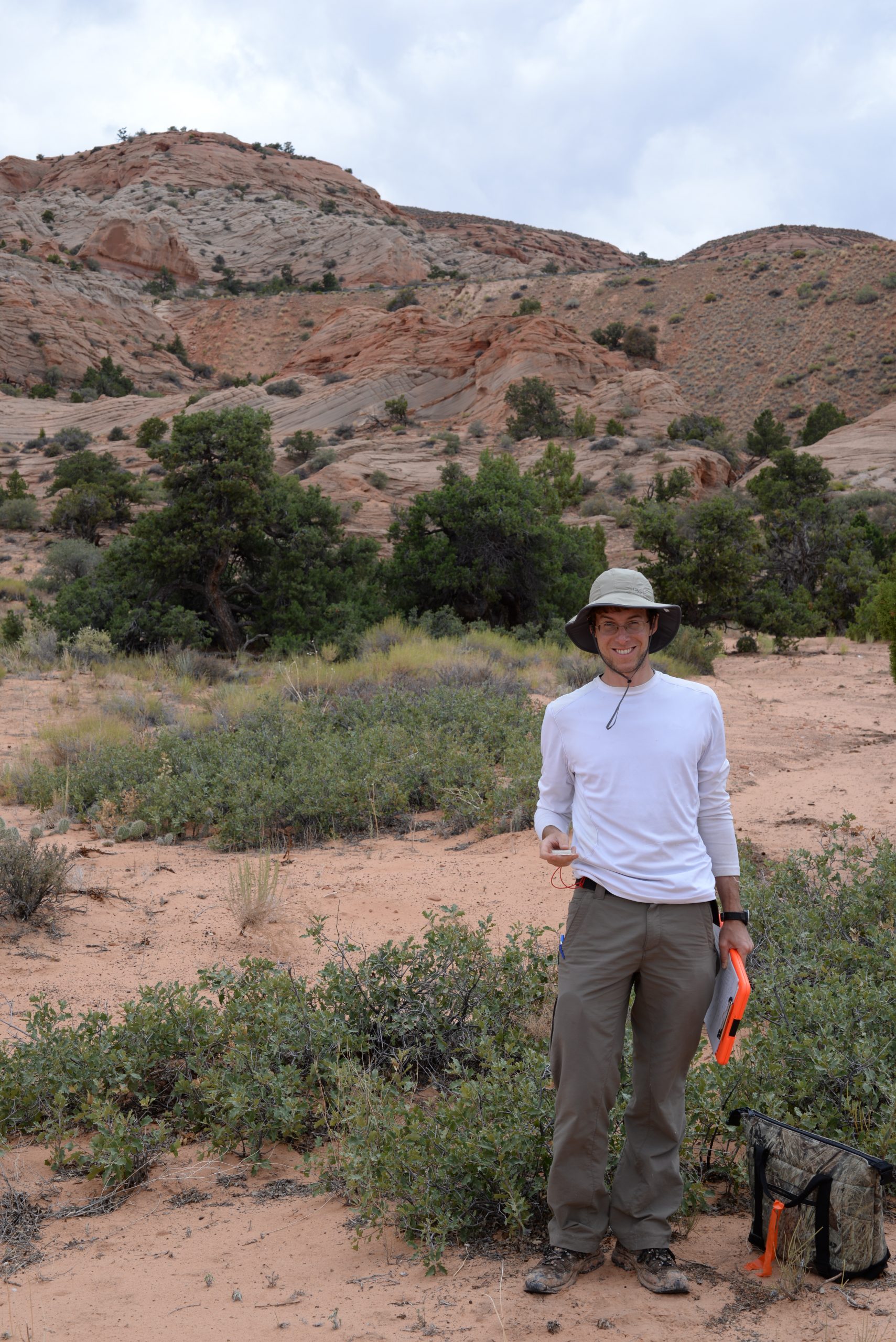
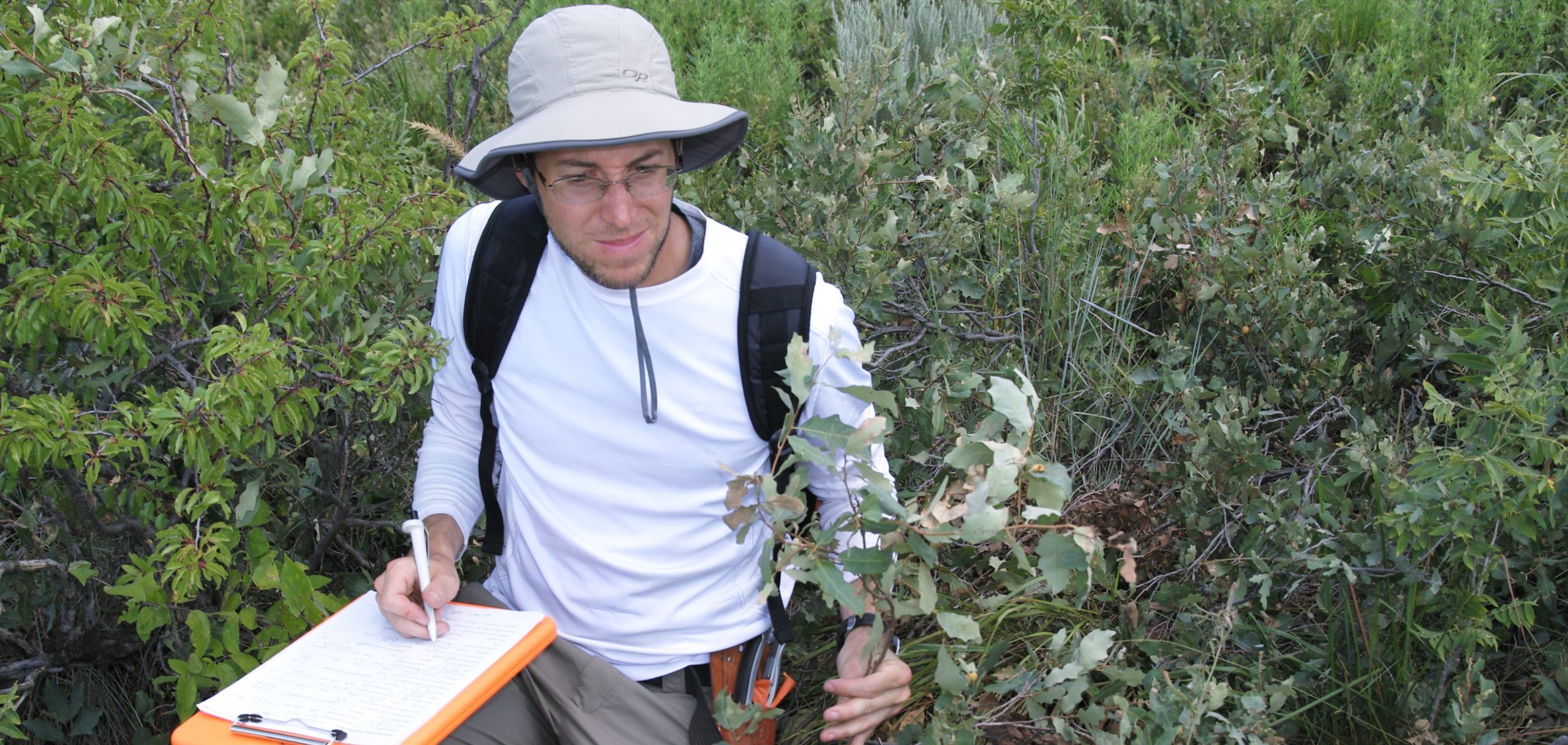
What has it meant to you to be a member of the CPC network? How has CPC supported your work?
To me, CPC has meant having really supportive colleagues and friends engaged in a common cause. CPC helps me to play a role in diverse teams who have creative ideas, and I have learned so much. I receive so much inspiration from colleagues on the ground – from the state-level plant conservation alliances, and from those who are restoring habitats, experimenting with tissue culture, developing policy, advocating, and surveying, and exploring. I have also had chance encounters at CPC meetings that have led to new projects, and wonderful opportunities to contribute to the CPC guidelines and to allow my students and laboratory members to present their work.
What advice would you give to the public who want to learn more about how they can help save imperiled plant species?
Sign up for the CPC newsletter! I read it each month and get a lot out of it – inspiration and ideas. Other sources of learning include The Nature Conservancy and the news websites Mongabay and Yale Environment 360, which cover all sorts of environmental and conservation issues around the world. Of course, the podcast In Defense of Plants is a unique and informative resource as well. Lastly, be sure to find and visit your local botanic gardens!
-
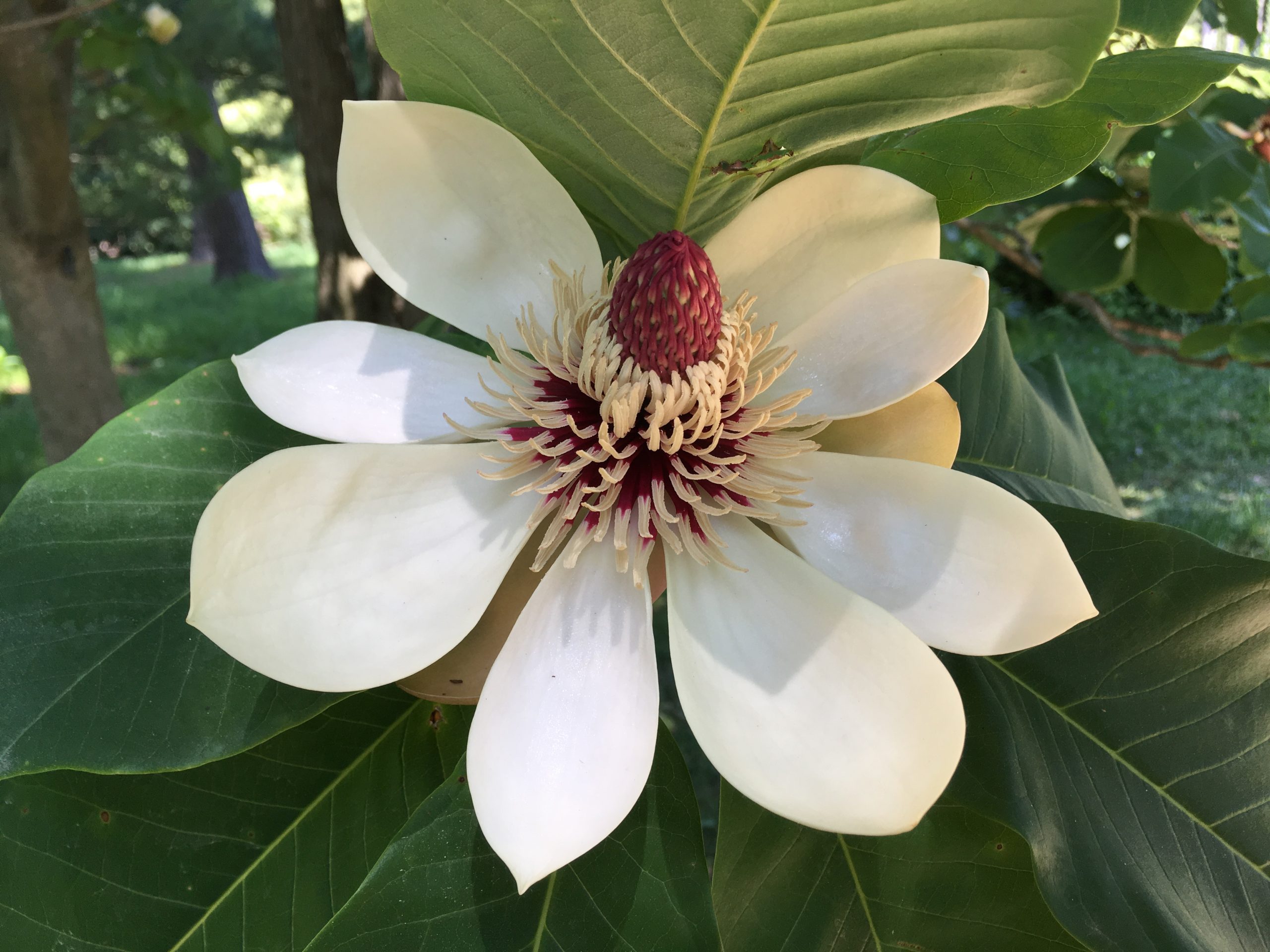
A favorite magnolia blossom seen during Sean's first summer at The Morton Arboretum. Photo by Sean Hoban. -
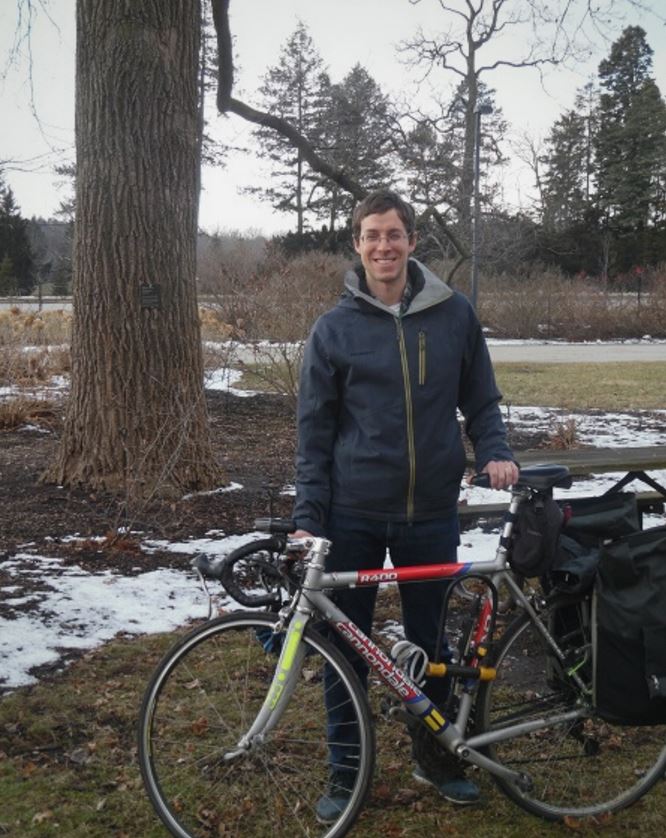
Sean Hoban with a tulip tree (Liriodendron tulipifera) at The Morton Arboretum, with his major hobby - his bike! Photo by Colleen Emrick. -

During his first postdoc working on conservation outreach and capacity building in Europe, Sean had several amazing experiences, including hiking the French Alps, seeing olive groves in Italy, and walking the cliffs of Ireland. Photo by Sean Hoban.
As Seen on CPC’s Rare Plant Academy
The CPC Rare Plant Academy serves as a hub of learning, sharing, and discovery for the plant conservation community, offering knowledge and resources amassed by experts across our network of 68 Participating Institutions. A key feature of the Rare Plant Academy is its Video Library, which contains instructional lectures and presentations created by fellow plant conservationists. This collection educates, informs, and inspires both emerging and seasoned professionals in the field of plant conservation.
We invite you to dive into lessons shared by our Participating Institutions, which include a number taught by the many Arboretums in the CPC network. You will be rewarded by many opportunities to broaden your understanding of Best Practices and cutting-edge technologies in plant conservation. Your involvement in the Rare Plant Academy both enhances our nation-wide community of plant-lovers and experts and promotes our mission to Save Plants to budding conservationists everywhere. A win-win!
Get Updates
Get the latest news and conservation highlights from the CPC network by signing up for our newsletters.
Sign Up Today!Employment Opportunities
Biologist (Ecological Services)
This position is located in the Branch of Consultation and Monitoring, Division of Scientific Authority (DSA), International Affairs Program (AD-IA), Fish and Wildlife Service (FWS). The incumbent is to serve as a Biologist in providing technical support on biological issues related to the international trade in at-risk species; and provide policy interpretation to a variety of sources, both within and outside FWS relating to the conservation of species subject to international trade.
Deadline to Apply: August 13, 2021
Open to all U.S. Citizens:
Laboratory Supervisor position (Biologist GS-0401-09/11) at the National Seed Laboratory
Vacancy Announcement #: 21-R8SVJUN-0864-818524DP-AM
Open Date: 07/30/2021
Close Date: 08/09/2021
Responsibilities
- Plans, coordinates, and conducts seed tests for government agency, commercial forest industry, non-profit, and private landowner clients to determine the quality of seed for reforestation (includes trees, shrubs, and native plants).
- Tests conducted include germination with and without prechill, purity, moisture content, seeds per pound, x-ray analysis, tetrazolium, and excised embryo.
- Enters and analyzes data and prepares complete and comprehensive seed quality reports. Makes recommendations to clients to improve seed quality.
- Manages the laboratories Quality Management System. Develops standard operating procedures, forms, and other tools according to established standards.
- Responsible for maintaining the laboratory?s Safety and Health Plan.
- Maintains accurate inventory of chemicals and pesticides, manages storage and disposal according to state regulations.
- Makes recommendations and takes steps to ensure that the laboratory complies with mandates of regulatory agencies such as the Occupational Safety and Health Administration.
- Plans and organizes pilot projects to find better ways to analyze seed or to improve seed management procedures.
- Represents the Forest Service and laboratory at various meetings/conferences/workshops or on committees and presents seed related information.
- Incumbent provides training, writes publications, and delivers professional presentations to communicate seed technologies to clients.
- Performs as a supervisor.
Travel Required
Occasional travel – Overnight lodging may be required for meetings, trainings and workshops.
Apply here: https://www.usajobs.gov/GetJob/ViewDetails/608994200
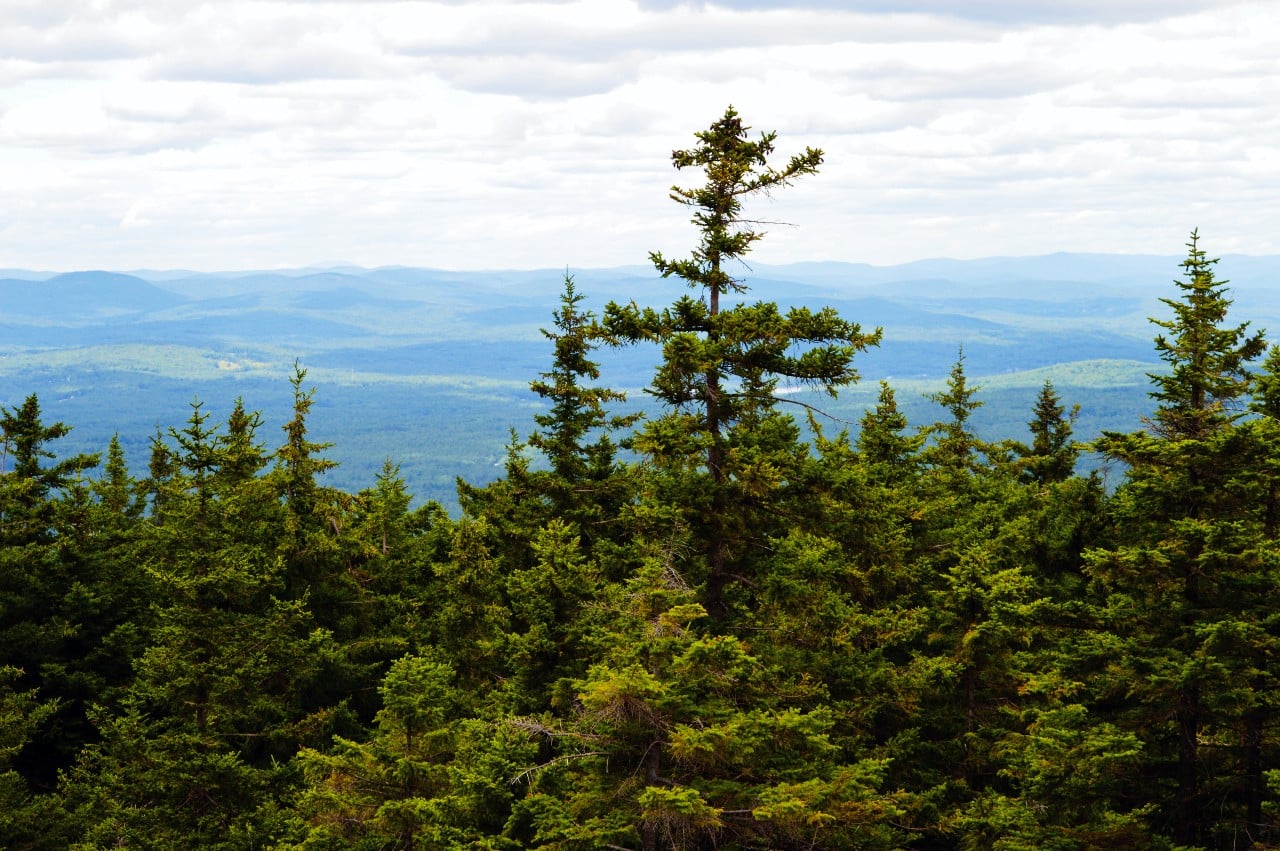
Native Plant Trust and The Nature Conservancy Announce Conserving Plant Diversity Report
Native Plant Trust and The Nature Conservancy announce Conserving Plant Diversity, a new report that provides a scientific framework and detailed roadmap for conservation action and land protection at the species, habitat, and parcel scales that will save plant diversity—and thus overall biodiversity—in New England as the climate changes. The report analyzes whether more than a century of conservation has protected enough land in the right places to save the region’s plant diversity. It concludes that we need to conserve another 2.3 million acres of climate-resilient land in specific habitats, and it identifies which areas are priorities in each of the six New England states. This technical report and its mapping tool give policy makers, federal and state agencies, and land trusts in each state the detailed information needed to most effectively spend their conservation dollars. To read more, go to www.NativePlantTrust.org/plant-diversity-report/
Ways to Help CPC

Support CPC By Using AmazonSmile
As many of us are now working from home and relying on home delivery more and more, we want to remind you that you can keep your home stocked AND Save Plants. If you plan to shop online, please consider using AmazonSmile.
AmazonSmile offers all of the same items, prices, and benefits of its sister website, Amazon.com, but with one distinct difference. When you shop on AmazonSmile, the AmazonSmile Foundation contributes 0.05 percent of eligible purchases to the charity of your choice. (Center for Plant Conservation).
There is no cost to charities or customers, and 100 percent of the donation generated from eligible purchases goes to the charity of your choice.
AmazonSmile is very simple to use—all you need is an Amazon account. On your first visit to the AmazonSmile site, you will be asked to log in to your Amazon account with existing username and password (you do not need a separate account for AmazonSmile). You will then be prompted to choose a charity to support. During future visits to the site, AmazonSmile will remember your charity and apply eligible purchases towards your total contribution—it is that easy!
If you do not have an Amazon account, you can create one on AmazonSmile.
Once you have selected Center for Plant Conservation as your charity, you are ready to start shopping. However, you must be logged into smile.amazon.com—donations will not be applied to purchases made on the Amazon.com main site or mobile app. It is also important to remember that not everything qualifies for AmazonSmile contributions.
So, stay safe inside, and when ordering online, remember you can still help save plants. Please feel free to share this email with your friends and family and ask them to select Center for Plant Conservation.
Thank you all for ALL you do.
Donate to CPC
Thank you for helping us save plant species facing extinction by making your gift to CPC through our secure donation portal!
Donate Today